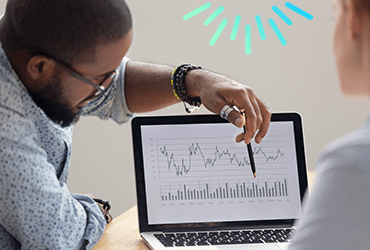
![]() Insights
Insights
Web analytics has been around for over twenty years, with Google Analytics first appearing in 2005, and online user behaviour has changed an awful lot since then. In the mid 00’s online behaviours was not as complex because browsing, purchasing and submitting online forms were often all carried out on the same desktop computer.
This meant tracking the path users took was more straight forward, as analytics and marketing measurement tech could place a cookie on a user’s browser, which meant marketers were able to easily see the touchpoints that led to a conversion (or a non-conversion) and make decisions based on this data. Today though, users can access the internet on a range of devices, making the customer journey a lot more difficult to analyse.
The introduction of internet access on mobile devices and tablets has made users ‘always on’, and had a substantial impact. User journeys have become more proliferated; for example a user may start their journey on a desktop, move down the funnel on their phone, and convert on a tablet – or any combination of these devices.
These interactions are all tracked, however the data collection technology (cookies) that analytics platforms use was designed in an era where users often performed all of their internet activity on a single browser and one device. By default, this technology cannot stitch together data interactions across devices, making it harder for marketers to see the full user journey.
Then came Intelligent Tracking Prevention (ITP), a privacy feature used by recent versions of Safari to block third party cookies, reduce the persistence of first party cookies and prevent local data storage in website browser. ITP dramatically limited web analytics ability to link user interactions together and reduced the ability for ad platforms to track users across many websites. ITP can influence how traffic and conversions are attributed in analytics platforms – as they are no longer able to stitch together all interactions from a given user. If seven days or more passes between interactions on the website (from the same browser), returning users may be recorded as new users.
Data regulations such as GDPR have further decreased our ability to track users across the web. Privacy laws require users to give explicit consent to have their personal data stored and tracked, including online identifiers (such as cookies and User ID) and location. Now, rather than requiring users to manually opt out of having their data tracked, websites must require users to opt in to every aspect of data storage and processing.
Opting in means sites using multiple cookies need to gain consent from each user. With privacy concerns growing, more and more users are choosing not to have their data tracked – which means we cannot place cookies on their browser, losing the touchpoints from their journeys and their conversions (or lack of conversion).



Being able to see the full customer journey is key to understanding how different channels and campaigns contribute to conversions. When parts of the customer journey are taken away, we cannot see the full picture in how a user came to convert, or alternatively what prevented someone from converting.
Without this data we cannot make informed decisions about where to put budget, how to optimise channels, and successfully engage users. It becomes more difficult to know what activity is working well and what activity is not, leading to poor performance and inefficient use of budget.
It is imperative that marketers adapt how they track and measure data, as privacy requirements have evolved. So, ensuring regulations are adhered to and user privacy is respected, is vital for collecting as much reliable data as possible.
Rather than finding temporary workarounds, the focus now needs to be on preserving what data we can, to piece together as much of the customer journey as possible. There are currently three Google solutions that can help preserve data:
Consent Mode helps advertisers adjust how they track and use data depending on what users have consented to. For users who give consent, their cookie data is tracked and stored as standard. For users who do not give explicit consent, consent mode allows marketers to still measure these conversions in analytics or Google Ads without using cookies or storing user data for advertising purposes, albeit at an aggregate level.
Consent Mode provides anonymous cookieless pings to fill in the gaps and see conversions from your campaigns– according to Google, conversion modelling via consent mode recovers more than 70% of ad click to conversion journeys which would have otherwise been lost. Consent mode is implemented via Google Tag Manager and can be used across Google Ads, Floodlight and Google Analytics.
One thing to note with consent mode is that while the modelled data is reported in certain analytics reports, we cannot pull out the raw data from these conversions, from analytics, in raw hit event level exports (for example, to be used for data projects and attribution models). However, you can use the data you do have to train machine learning models to fill in the gaps if you do want to carry out bespoke projects.
![]()
Source: Google
When cookies aren’t available, enhanced conversions can help fill in gaps with what happens after a user engages with an ad. Enhanced conversions use first-party data from users who have consented to model how non-consenting users behave after clicking through an ad, allowing advertisers to measure the impact of their campaigns even in the absence of cookie consent.
One of the key reasons to create a GA4 property is that it offers a more robust solution for connecting the dots of user journeys. Google Analytics 4 does this by having multiple ways of understanding the user. Primarily, GA4 uses USERID, which is a specific ID that is output by the website or app upon authentication (i.e. login). The second user identifier is DeviceID, which is either the GA clientid from the first party cookie or an app instance ID from a mobile app. It’s worth noting that these user definition methods are combined into a single view in GA4, whereas previously, in Universal Analytics, clientid and USERID were setup in different views.
Preserving your first-party analytics data will help you to retain as much information about your customers and the sale journey as possible. But it is important to enrich and analyse this data, to build up a more in-depth and accurate view of what is going on.
Additional first-party data, from locations such as a CRM, can enrich the view we have of customers. First-party data can then be used to build specific audiences to help activate in your marketing efforts.
The end of cookies and web tracking doesn’t just impact first-party data collection. Advertising platforms use third-party data collected by cookies to profile and measure users; without cookies in place, targeting becomes less efficient and measurement becomes less accurate.
Now is the time for advertisers to move to a first-party centric strategy, in order to preserve your marketing efforts in the post-cookie era.
Need to preserve your data?Learn how you can by downloading our workshop

![]() Insights
Insights

![]() Insights
Insights

![]() Insights
Insights